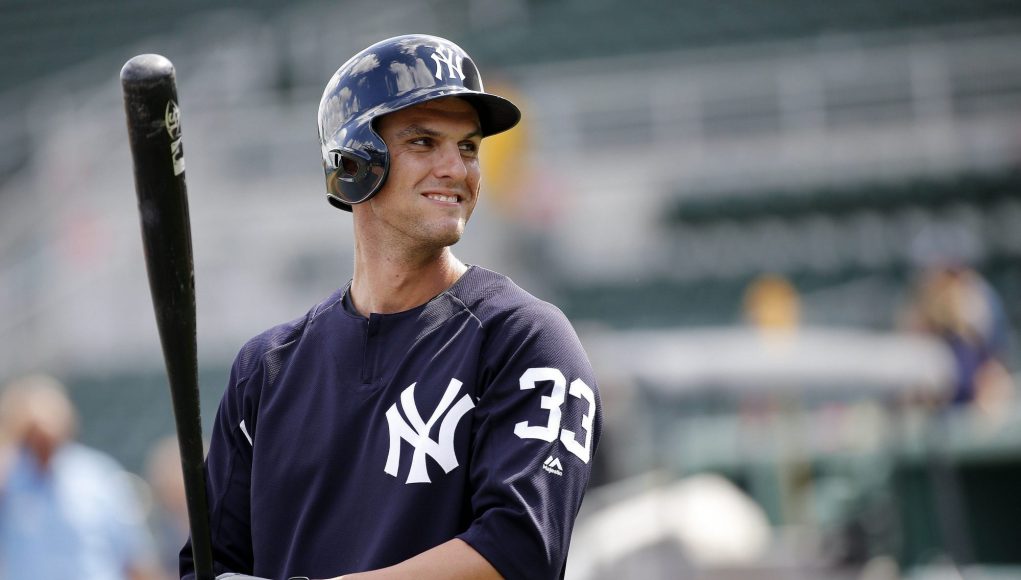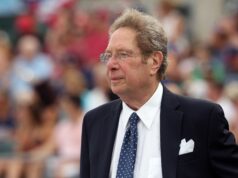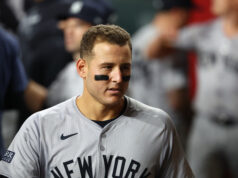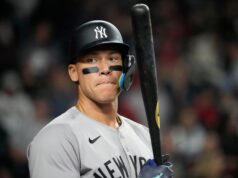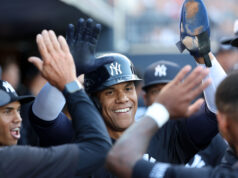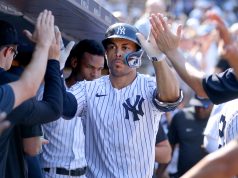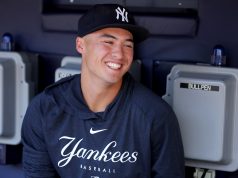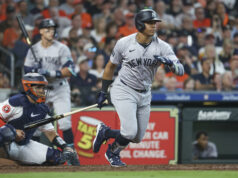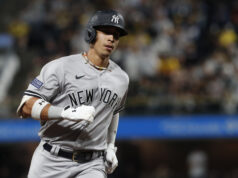The New York Yankees missed first baseman Greg Bird in 2016, but will thrive if he remains healthy throughout his second year in the bigs.
For New York Yankees‘ first baseman Greg Bird, rust has been brought up as a legitimate concern entering 2017. In Grapefruit League action thus far, however, the 24-year-old has shown zero signs of it.On the road against the Boston Red Sox at Fenway South on Tuesday, the lefty homered twice in the Yankees’ 5-4 split-squad win.
Bird slapped a two-run homer around the “second” Pesky Pole off right-hander Kyle Kendrick in the first inning, then launched a solo shot over the Green Monster replica off southpaw Edgar Olmos in the sixth — just one day after going 2-for-3 with two doubles in a win over the Baltimore Orioles.
In 2016, Yankee first basemen hit just .222 (third-worst in MLB), hit 23 home runs (seventh-worst in MLB), maintained an OPS of .659 (second-worst in MLB) and sported a -1.4 WAR (third-worst in MLB). Which made it worse was that in the year before, New York finished in the top 10 in all of those categories.
2015’s saw stellar production from Mark Teixeira, a year in which the slick-fielder finished 28th in MVP voting thanks to a .255 with 31 homers and 79 RBI’s in 111 games until a fracture decimated his chances to finish off the season.
He came back healthy the following season, but his ineffectiveness caused a treacherous first base shuffle that Yankees’ fans would like to forget sooner rather than later.
From Opening Day to June 25, Teixeira slashed .176/.271/.259 with just three home runs as he struck out 50 times in 49 games. In that same time frame in a year prior, the switch-hitter had already smacked 18 home runs so that was a major reason why they were 6.5 games back last year compared to 1.5 two years ago.
With Bird out for the entire season with a right labrum injury, the Yankees had to try to replace 31 homers with Dustin Ackley, Chris Parmelee, Rob Refsnyder, Ike Davis and eventually Billy Butler. As the first base rankings would tell you, it wasn’t the most effective shuffle.
That’s why getting Bird back and healthy is so important for New York.
When Teixeira missed the later part of the 2015 season, Bird made most forget that they just lost an all-star who had hit 31 home runs. He slashed .261/.343/.529 with 11 home runs 31 RBI’s in 46 games — a 38/109 total when proportioned to a full season.
Now that Teixeira is gone, it’s time for the Bird show. If he could make it to Opening Day with no issues (both health and production) and starts the season the way he looks right now through one week of spring training, the offense that struggled mightily in 2016 will finally be stabilized.
If you were doing so before reading this, don’t discount the importance of Gregory Bird. You saw the treacherous first base shuffle, the ineffectiveness and the tragic final year of Teixeira’s career. Turning to a guy like Chris Carter is a solid insurance plan, but the Yankees would be better off if their fifth round pick of the 2011 amateur draft made that insurance position completely unnecessary.


